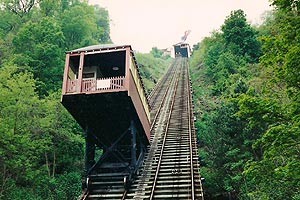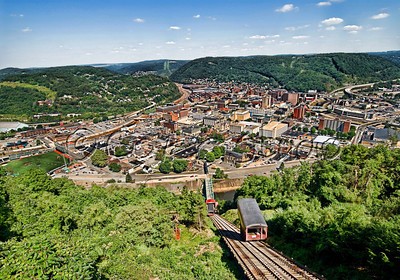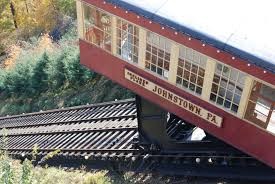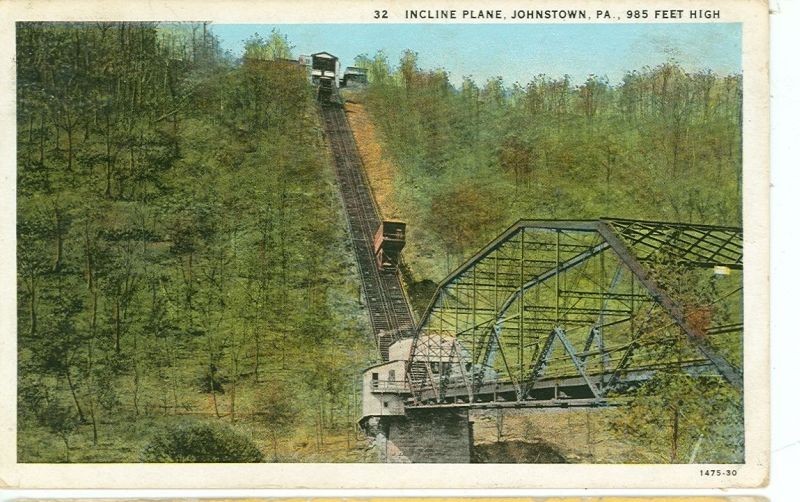Johnstown Inclined Plane
Introduction
Text-to-speech Audio
Images
Johnstown Incline Plane

Johnstown Incline Plane looking over the city

The cars that travel on the incline

Incline plane with double decker cars. The passengers would be in the bottom while vehicles, horses, etc would be on the upper deck.

Backstory and Context
Text-to-speech Audio
The design is a parallel set of railroad tracks with just under an 80 percent grade that supports two cars. While one car descends the tracks, the other would goes up and acts as a counterweight. The motor and winch are at a 90 degree angle to the incline, a design that is unique to the Johnstown incline and a result of the sharp angle of descent. An emergency brake is connected to a switch and will stop the cars if tripped.
The incline originally operated with two double decker cars until 1921 when the current design for the cars was adopted. Today, the two cars carry people as well as cargo and vehicles on the ninety-second journey up or down the hill. There has been one fatality on the incline, but this was not due to an accident or malfunction. The only accidents have been the result of horses were spooked and jumped out onto the rails.
The Cambria County Transit Authority, now CamTran, owns the incline after buying it from Westmont borough in 1983 for the sum of $1. As part of that agreement, the Transit Authority agreed to pay $3.5 million dollars for renovations. The incline was added to the National Register of Historic Places in 1973. In addition to serving as part of the daily commute for many residents, the incline serves as a tourist attraction for the city of Johnstown.
Sources
"Johnstown Inclined Plane, 1891." Johnstown, PA.com. Accessed December 13, 2016. http://www.johnstownpa.com/History/hist17.html
Wiseman, Lisa. "Johnstown's Inclined Plane is steeped in history, tragedy." The Baltimore Sun. December 23, 2004. Accessed December 13, 2015. http://www.baltimoresun.com/bal-li.trips23dec23-story.html
Lasky, Jennifer. "Up, up, and away! The Johnstown Inclined Plane." Pa book 2 libraries, Penn State University. Fall, 2010. Accessed December 13, 2016. http://pabook2.libraries.psu.edu/palitmap/JtownIncline.html
